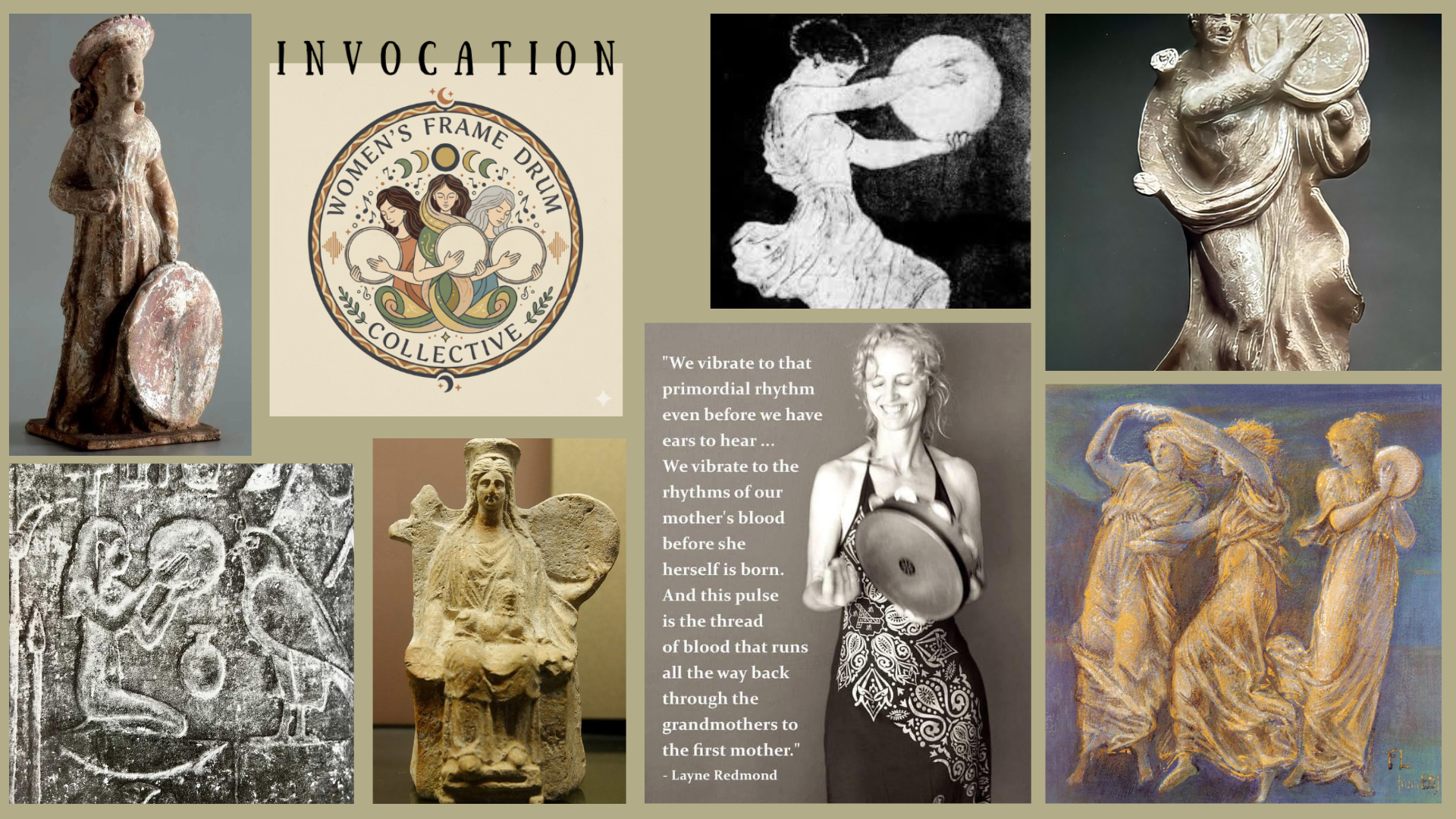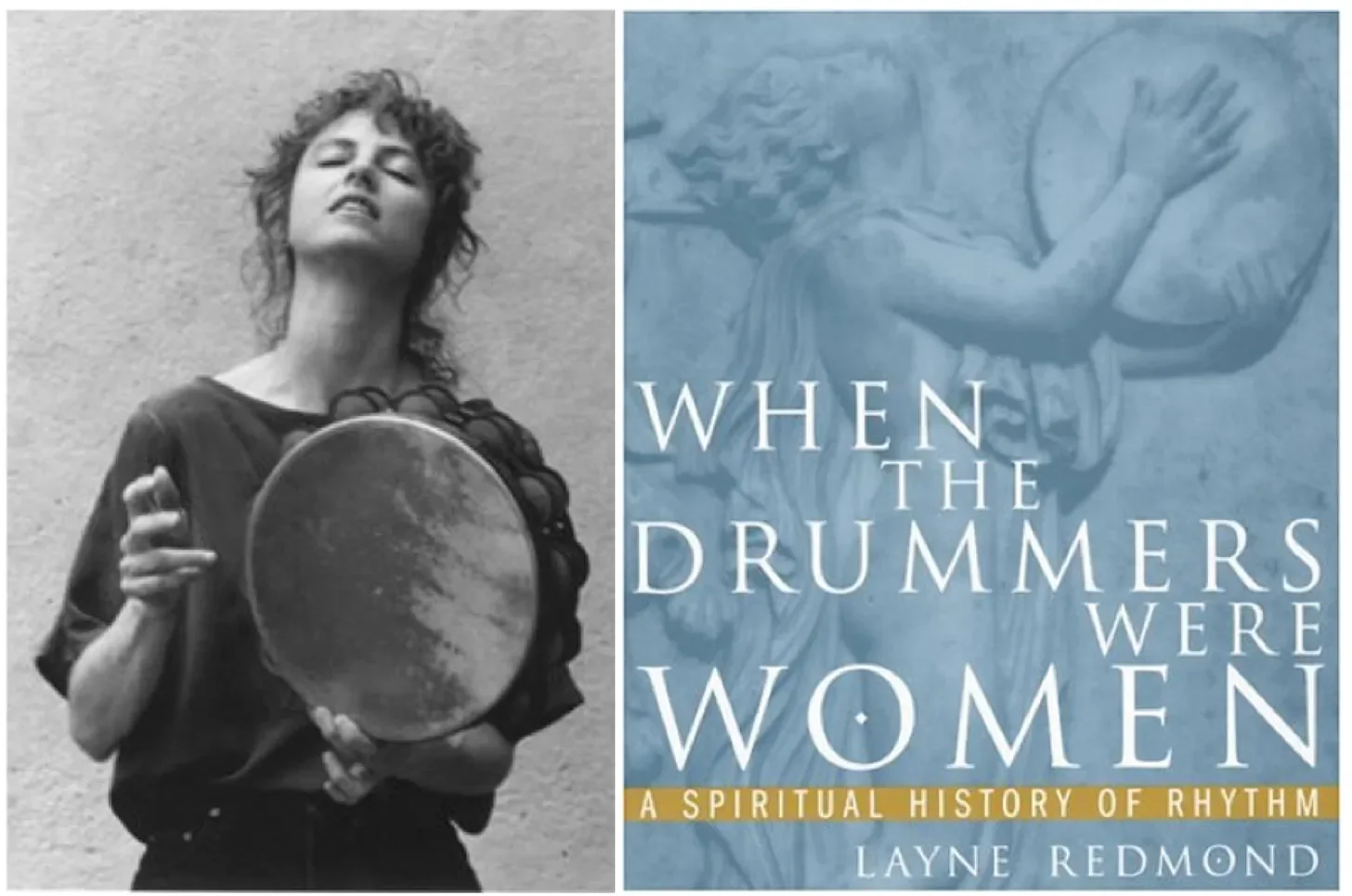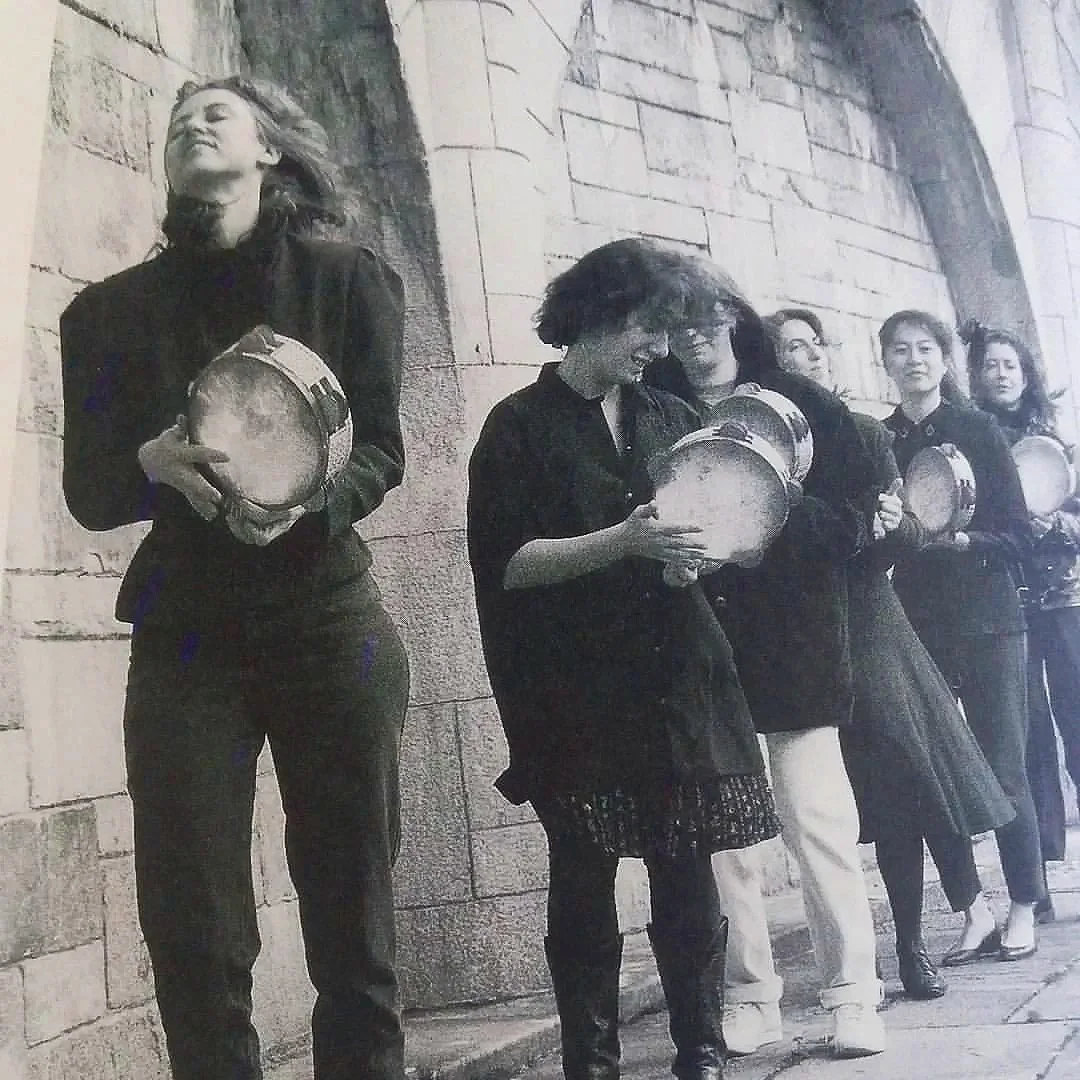
“You may not remember, but let me tell you this …
someone in some future time will think of us.”
- Sappho, 6th c. BCE poetess, composer, musician, aka “the Tenth Muse.” (Epigraph from Layne Redmond’s book When the Drummers Were Women)
Clockwise from top left: Woman with frame drum, Hellenistic Period, 325 BCE; Invocation LOGO; Greek priestess of Dionysus (Maenad) paying frame drum to prepare wine for ritual use, Italy, 420 BCE; Woman dancing and playing frame drum, Hellenistic Period, 3rd c. BCE; Three Female Figures Dancing and Playing, Edward Coley Burne-Jones, late 19th c.; Layne Redmond playing tambourine, early 21st c.; goddess Cybele with a libation bowl and tympanon (frame drum), Attica, 350 BCE; goddess Hathor sitting in lotus playing frame drum to Horus the Hawk god, Dendera, Ptolemaic period, 4th c. BCE.
Is Sacred Women’s Frame Drumming calling you?
Throughout the world women have been the primary players of frame drums from the beginning of recorded history.
Throughout cultures north, south, east, and west women, frame drums, ritual, ceremony, and community have been inexorably linked.
Given the archeological evidence, women with frame drums seem to have been the primary technicians of the Sacred . . . the ones who held community together with their drums.
As evidence, there are hundreds—if not thousands—of figurines, reliefs, carvings, statues, writings, myths, and stories portraying priestesses and goddesses throughout the ancient world holding, playing, and intentionally using frame drums. Women frame drummers can be seen in ancient artifacts playing their drums in processions, at planting and harvesting times, and in rites of passage, celebration, and mourning.
Written Sumerian records from around 3000–2500 BCE describe the goddess Inanna as the creator of the frame drum and tell of her priestesses who used the frame drum in rituals. One example of this is the earliest known named frame drummer, a priestess named Lipushiau from the city-state of Ur (modern day Iraq) around 2380 BCE—44 centuries ago! She was the head of the Ekishnugal temple and her official symbol of office was the balag-di, which is believed to have been a small, round frame drum used in liturgical chanting and rituals.

As women, sacred frame drumming is in our blood...it is our birthright.
*
As women, sacred frame drumming is in our blood...it is our birthright. *
Layne Redmond’s Discoveries and Re-collections
In the late 20th century, Layne Redmond (1952-2013) frame drummer, art historian, and muse for many of her students, revived and traced this long lost her-story of women frame drummers and lovingly compiled this research in her book When the Drummers Were Women: A Spiritual History of Rhythm (1997). Layne richly illustrated it with stories and images of women frame drummers from all over the world throughout the millennia.
In addition to her scholarly work excavating and reviving this lost and illustrious her-story, Layne was a “master” frame drummer herself and generously conveyed her knowledge and passion for the full body of work that encompasses women’s frame drumming to her many students. Through shared practices over decades she planted seeds of fertile imagination and capacity in the minds, hearts, and bodies of her students.
Carrying this lineage forward, Layne’s students have fostered this work into flourishing groups of women frame drummers around the globe.If you’d like to be one of them, reach out to us via the Contact page.

“Ancient sources tell us that the frame drum was not just a powerful symbol of spiritual presence, it was an important tool for many spiritual experiences. Priestesses of the goddess were skilled technicians in its uses. They knew which rhythms quickened the life in freshly planted seeds, which facilitated childbirth, which induced the ecstatic trance of spiritual transcendence. Guided by drumbeats, these sacred drummers could alter their consciousness at will, travelling through the three worlds of the goddess: the heavens, the earth, and the underworld.”
—Layne Redmond, 1997, p. 170




